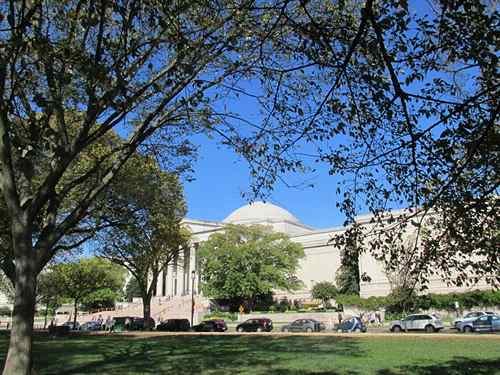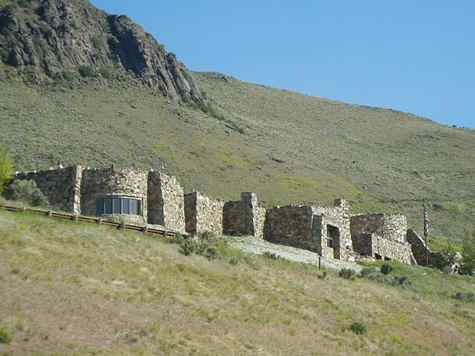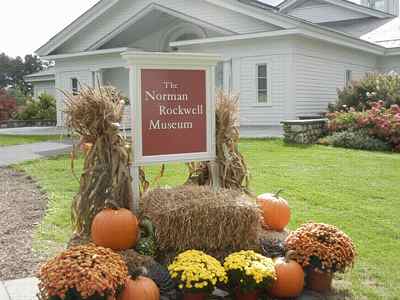![]()
Museums Explained
Sections:
Mission, Organization and Accreditation
Mission
The general mission of art museums is to preserve, enhance, interpret, research and extend the reach of collections on behalf of society, provide public service through education, display of art works, scholarship and related activities, with accountability to their constituents. For information on missions of museums in your state contact the state's museum association. Websites for state museum associations include:
California Association of Museums
Colorado-Wyoming Association of Museums
Florida Association of Museums
Georgia Association of Museums and Galleries
Illinois Association of Museums
Association of Indiana Museums
Louisiana Association of Museums
Minnesota Association of Museums
Mississippi Museums Association
Museums Association of Montana
Museum Association of New York
New Mexico Association of Museums
The North Carolina Museums Council
Pennsylvania Federation of Museums and Historical Organizations
South Carolina Federation of Museums
Association of South Dakota Museums, Inc.
Tennessee Association of Museums
Virginia Association of Museums
West Virginia State Museum Association
Wisconsin Federation of Museums
The national association is American Alliance of Museums, formerly the American Association of Museums.
Collection management policy
A museum establishes a written collection management policy for several reasons. The policy identifies the scope of its art collection, and may establish guidelines for improving the collection. The policy also may contain sections covering duties and responsibilities of a collections committee, plus guidelines for accession, deaccession, documentation and storage. An online example of a collection management policy is the abridged version of the complete Collection Management Policy for the Tucson Museum of Art and Historic Block. The Museum's complete policy may be viewed here and the related acquisition procedure may be viewed here. Also see the 2011 policy adopted by by Tampa Museum of Art. Available by online search are further policies and procedures including those for Metropolitan Museum of Art and Museum of Texas Tech University. An interesting reference book is Things Great and Small: Collections Management Policies, by John Simmons, who has served as director of the University of Kansas museum studies program and surveyor for the American Association of Museums's Museum Assessment Program.
Organization
Museums may be departments of government entities or are separately owned nonprofit institutions. Others may be affiliated with colleges and universities. The SECAC Committee to Establish Guidelines for College and University Galleries and Museums says: "College and university art galleries and museums exist in a wide variety of forms. They often focus exclusively on art, but also can include other disciplines such as anthropology, history and science. According to the American Association of Museums, over 90% of America's museums have permanent collections, while others solely mount exhibitions. They can be found as independent entities within the academic setting, or as a part of a department or departments."[1]
Examples [2] of art museums that are departments of municipalities or larger government entities are:

(above: View of the West Building of the National Gallery of Art Looking West along Constitution Avenue, NW, photo © 2014 John Hazeltine)
Colleges and Universities [3] are major sponsors of art museums. Examples include:
Other museums are private such as:
There are relatively few private museums in America. In a Wall Street Journal article from April 4, 2008; Page W1, titled "The Firestorm Over Private Museums, Instead of donating their art, collectors are building private museums -- and roiling the art world," reporter Lauren A.E. Schuker says: "There are fewer than 100 private museums in the U.S., some dating back almost a century...."
Some museums are even affiliated with preparatory schools. An excellent example is the Addison Gallery of American Art at Phillips Academy.
While many museums are encyclopedic in their collections, others collections are dedicated to more specific themes.
Geographic-centered themes:
Subject-centered themes:

(above: National Museum of Wildlife Art, July, 2012. Photo by John Hazeltine)
Artist-centered themes:

(above: Norman Rockwell Museum, Late Summer, 2013. Photo by John Hazeltine)
Accreditation
American Alliance of Museums has had an accreditation program since 1971. AAM says on a page in its website that "The Accreditation Program had its genesis in the mid-1960s. The program arose from museums' desire to define attainable professional standards for cultural and educational service, and to do so before some other group or the government imposed standards upon the field from without. Museums that do not own collections, but that use objects in their exhibits and programs, are also eligible for accreditation." Accreditation promotes:
This explanation [4] is offered by the Ellen Noël Art Museum:
For more information on the accreditation process see the "AAM Accreditation Process" by the Museum of Northern Arizona.
In 2005 the AAM published Accreditation Resource Kit,
3rd edition . "The completely revised Kit
is a comprehensive tool to help you learn more about accreditation standards
and benefits, demystify the process, determine whether your museum is ready
to apply, and to guide its preparation. Also excellent as a self-diagnostic
to assess operations and aid in strategic planning. An excellent resource
not only for museums interested becoming accredited, but for consultants,
students, new museums, and any institution that wants to move to the next
level of professionalization. Find useful information in the Kit about the
types of issues and performance measures all museums should consider as
part of their operations." - AAM (right: front cover, Accreditation
Resource Kit, 3rd edition. Image courtesy AAM) [5]
. "The completely revised Kit
is a comprehensive tool to help you learn more about accreditation standards
and benefits, demystify the process, determine whether your museum is ready
to apply, and to guide its preparation. Also excellent as a self-diagnostic
to assess operations and aid in strategic planning. An excellent resource
not only for museums interested becoming accredited, but for consultants,
students, new museums, and any institution that wants to move to the next
level of professionalization. Find useful information in the Kit about the
types of issues and performance measures all museums should consider as
part of their operations." - AAM (right: front cover, Accreditation
Resource Kit, 3rd edition. Image courtesy AAM) [5]
Other online resources
For a historical perspective on American art museums, read online the complete text of the book titled "Art Museums in America by George Fisk Comfort" by Comfort, George Fisk, 1833-1910, (Boston: H. O. Houghton and company, 1870) from the University of Michigan Digital Library Production Service Humanities Text Initiative.
The College Art Association Web page for Standards and Guidelines contains a 2013 report titled "Information about Museum Ethics and Professional Practices."
Google Books offers an online
Limited Preview of The Manual of Museum Management, By Barry Lord,
Gail Dexter Lord. Published 1997 by Rowman Altamira. 276 pages.  ISBN:075910249X. Google Books says: "This volume presents a comprehensive
and incisive analysis of the principles of muesum organization, the ways
in which people work together to accomplish museum objectives and the ways
in which museums can function most effectively."
ISBN:075910249X. Google Books says: "This volume presents a comprehensive
and incisive analysis of the principles of muesum organization, the ways
in which people work together to accomplish museum objectives and the ways
in which museums can function most effectively."
"Published at a time when museums are in search of common ground, The Manual of Museum Management provides a tool with which we may begin to understand and deal with the challenges that are confronting museums. The book offers a shared vocabulary and analytical framework through which to rethink the museum. It is structured into three parts, discussing, in turn, the why, the who, and the how of museum management. That three quarters of its pages are devoted to the how is a particular strength....The book offers itself as a point of reference for all the diverse interests that comprise a museum. It gives museum directors a conductor's podium on which to make music from the chorus of curators, designers, educators, registrars, constituents, volunteers, board members, funding agencies, and the general public....Well-illustrated with tables and figures, the text also includes a dozen case studies....A useful appendix of job descriptions and qualifications for museum positions and a glossary defining key terms." - Patrick Norris, Kalamazoo Valley History Center, HISTORY NEWS (right: front cover: The Manual of Museum Management. Image courtesy Google Books)
![]() From January through May of 2001, Professor Liana Cheney
of the Graduate School of Education at the University of Massachusetts at
Lowell chaired "Museum Issues",
a 22 class course recorded in its entirety as a distance learning course.
The course includes 22 lectures. Museums are defined and many types and
facets of museums are discussed. Liana
De Girolame Cheny is Professor of Art History, and Chairperson, Department
of Cultural Studies, and Coordinator of Art History, Interdisciplinary and
Intercollegiate Studies at the University of Massachusetts Lowell. She received
her PhD from Boston University in 1978.
From January through May of 2001, Professor Liana Cheney
of the Graduate School of Education at the University of Massachusetts at
Lowell chaired "Museum Issues",
a 22 class course recorded in its entirety as a distance learning course.
The course includes 22 lectures. Museums are defined and many types and
facets of museums are discussed. Liana
De Girolame Cheny is Professor of Art History, and Chairperson, Department
of Cultural Studies, and Coordinator of Art History, Interdisciplinary and
Intercollegiate Studies at the University of Massachusetts Lowell. She received
her PhD from Boston University in 1978.
Notes:
1. Report of SECAC Committee to Establish Guidelines for College and University Galleries and Museums. Adopted by the Southeastern College Art Conference at the 2000 Annual Meeting, Louisville, Kentucky, October, 2000.
2. The links for the above-listed institutions are to Resource Library "Sub-index" pages: When Resource Library publishes over time more than one article concerning an institution or non-profit organization, the publication creates as an additional resource for readers a sub-index page containing: 1) links to each RL article or essay concerning that institution or non-profit organization, plus 2) available information on the location, times of of public admission and costs of admission.
3. See "Why Do Universities Have Museums?" by Kimerly Rorschach, Director, Nasher Museum of Art, Duke University, filmed November 10, 2004. A relevant excerpt from her presentation:
also read online through Google Books the full text of Managing University Museums By Organisation for Economic Co-operation and Development, Melanie Kelly, Programme on Institutional Management in Higher Education, Published 2001 by OECD Publishing. 200 pages. ISBN:9264195246. A support organization for college and university art museums is the College Art Association.
4. From Ellen Noël Art Museum news release dated August 24, 2005
5. AAM web pages accessed October 28, 2004 and April 17, 2008.
rev. 10/17/12
![]() Return to Museums Explained
Return to Museums Explained
Links to sources of information outside of our web site are provided only as referrals for your further consideration. Please use due diligence in judging the quality of information contained in these and all other Web sites and in employing referenced consultants or vendors. Information from linked sources may be inaccurate or out of date. Traditional Fine Arts Organization, Inc neither recommends or endorses these referenced organizations. Although Traditional Fine Art Organization, Inc. includes links to other web sites, it takes no responsibility for the content or information contained on those other sites, nor exerts any editorial or other control over those other sites. For more information on evaluating web pages see Traditional Fine Arts Organization, Inc.'s General Resources section in Online Resources for Collectors and Students of Art History.
 Search
Resource Library for thousands of articles and essays on American
art.
Search
Resource Library for thousands of articles and essays on American
art.
Copyright 2015 Traditional Fine Arts Organization, Inc., an Arizona nonprofit corporation. All rights reserved.